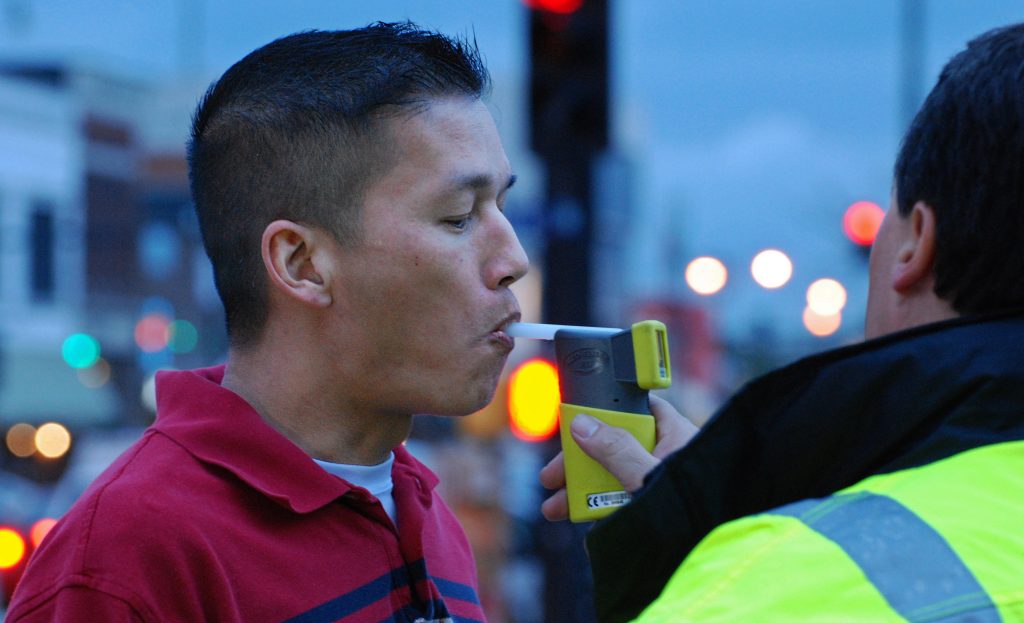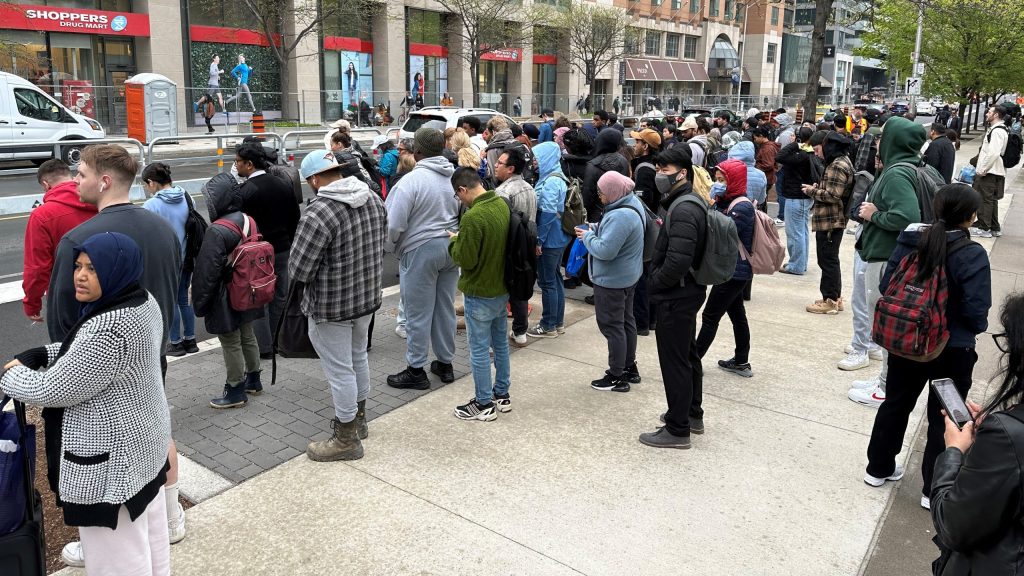Controversial platforms from 2 new Ontario parties concerning to 2SLGBTQ+ advocates
Posted May 30, 2022 6:16 pm.
Last Updated June 6, 2022 9:39 am.
Two newer Ontario political parties have been making waves in the last two years for controversial stances on pandemic measures and social issues, including trans rights, gender identity, abortion, and racial justice.
Their relative prominence in the provincial election is prompting alarm from the queer community.
“These are attacks on marginalized communities. These are efforts to create a social environment, in our schools and in our communities, where trans, gender diverse young people are stigmatized and shamed,” said Fae Johnstone, spokesperson for Queer Vote Ontario.
The right-leaning New Blue Party and Ontario Party are each running an almost-full slate of candidates province-wide, unlike some of the other two-dozen political parties registered with Elections Ontario.
The large roster from each party “says something about their organizational capacity, their popularity and their funding to be able to pull that off,” said John Beebe, senior advisor of the Democratic Engagement Exchange.
The New Blue and Ontario Party are both campaigning on ending all COVID-19 restrictions and mandates, despite few rules still being in place. New Blue also plans to stop “woke activism” by removing Critical Race Theory.
Similar to the New Blue, the Ontario Party has pledged to stop the “woke indoctrination in schools,” which its members say includes Critical Race Theory.
Currently facing a backlash from right-wing politicians in the United States, Critical Race Theory is the academic practice of looking at history through the frameworks of law, sociology, civil rights, and other disciplines. It is not currently taught in Ontario schools.
Both parties have also pledged to remove gender identity education from schools.
In addition, the Ontario Party has pledged to prevent “the use of non-reversible treatments or procedures for children and youth under 18 experiencing gender dysphoria/gender confusion,” along with making it illegal for public-school teachers to “promote partisan political positions or to engage in personal political activism in the classroom.”
The Ontario Party, in their education platform, also says students will learn that “there are two genders.”
The Ontario Party’s other key platform ideas include preventing social media companies from banning users based on their content. This comes as party leader Derek Sloan was temporarily banned from Twitter earlier this month. It also includes a plan to repeal the law that makes it illegal for pro-lifers to protest outside of abortion clinics and hospitals performing abortions.
Advocates are concerned about controversial language used by parties in their platforms
Some groups are concerned about the rhetoric being spread by these political parties and the damage it can cause to those in the LGBTQ2S+ community.
Queer Vote Ontario is a coalition of 2SLGBTQ+ and ally organizations from across the province, that are working to have their issues addressed during the election. Johnstone tells CityNews the language used in the parties’ platforms surrounding gender identity and ideology is “absolutely horrifying.”
“They want to make trans and 2SLGBTQ+ teachers scared to mention their identities, and they want a world in which our communities’ rights are rolled back.”
“It’s 2022. We shouldn’t be seeing parties gleefully trying to repeal foundational human rights or initiatives to protect people’s health and well-being, particularly in our schools. Trans young folks have some of the highest rates of suicide and suicidal ideation in this country. And these parties, in all honesty, they’re committed to making that worse for these kids who deserve so much better,” explained Johnstone.
Having these political parties share their platforms starts to normalize these types of agendas in society, she shared.
“This is about a restriction of women’s rights. It’s about a restriction of trans people’s – and all 2SLGBTQ+ people’s – rights. And it’s part of a global hate-based agenda. You can connect the dots between Derek Sloan’s party and the Republicans in Texas banning access to medically necessary health care,” said Johnstone. “All of these folks, the ideology is the same.”
Ontario’s ‘splinter’ parties
The New Blue party was officially registered in Ontario in January 2021 by Cambridge member of provincial parliament Belinda Karahalios and her husband Jim Karahalios.
Belinda had been kicked out of the Ontario Progressive Conservative’s caucus for voting against a bill that allowed the government to extend or amend some emergency orders related to COVID-19. She sat as a New Blue MPP at the dissolution of the Ontario legislature. In that time, she was temporarily ejected from the legislature for attending in person, without being vaccinated against COVID-19.
The Ontario Party participated in the 2018 election but failed to pick up a seat. However, it ran just five candidates in the last election, compared to 123 candidates vying for seats this year. Former MP Sloan took over as a leader in 2021 after he was removed from the federal Conservative Party for accepting a donation from a white supremacist.
Sloan had previously attempted to run for leadership of the party but finished last in voting. Ontario MPP Rick Nicholls joined the party in 2021, after being expelled from the PC caucus for refusing to get vaccinated against COVID-19, giving the Ontario Party its first seat in the legislature.
Party supporters have also been involved in anti-COVID-19 mandate rallies over the last two years, including the Freedom Convoy in Ottawa.
Social media can play a key role in garnering support and attention for these recently formed parties, noted Beebe.
“If they have a strong, charismatic leader who comes up and is able to get media attention or able to get attention on social media, that’s the new wildcard here. [It’s] social media and whether or not they can go viral in some positive way and get that attention,” he explained.
Both parties are run by elected politicians who were ousted by the mainstream conservative parties, federally or provincially. As such, Beebe said these are considered “splinter” parties, as opposed to fringe parties, which usually are created around a particular issue or a leader who has never actually successfully been elected.
An example of a high-profile splinter group is the People’s Party of Canada, run by former Conservative Party Cabinet minister Maxime Bernier. “In 2019, they really underperformed expectations, and were cracking just a couple percent or so,” Beebe noted. “Whereas in 2021, they were able to attract a larger percentage of vote but still not get any of their candidates elected.”
Splinter parties that represent a view that is not in the mainstream or not represented in any of the current political parties “can attract actually people who may not have voted before,” Beebe said. “We saw that south of the border with some of the people who turned out to vote for [Donald] Trump.”
The attention now turns to Thursday and how these splinter parties will fare against other candidates.
Beebe said it will be interesting to see how they perform in this election and in the years to come when they don’t have the rallying issue of the COVID-19 pandemic.
“I think it’ll be really interesting to the kind of traction they get and the attention they get. Right now, I suspect they’re more of a fringe element,” said Beebe.
“But I think that the question also, of whether [these parties are] simply in response to the unprecedented challenges we faced around the pandemic, and all the issues that raised and then do they fade away, if and when the pandemic you know, fades away. I think that’s a big open question.”










